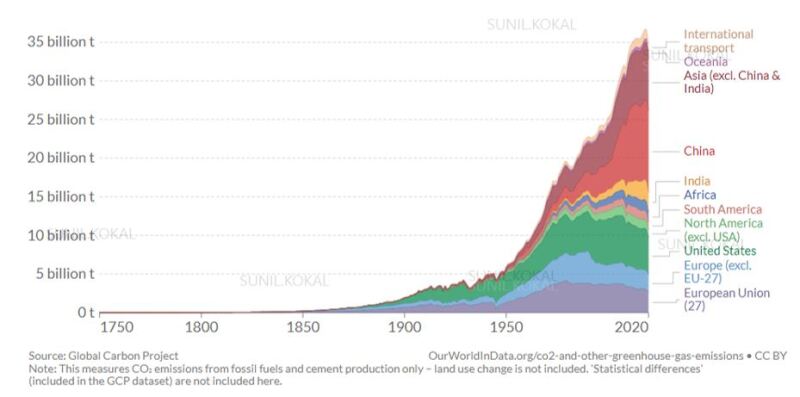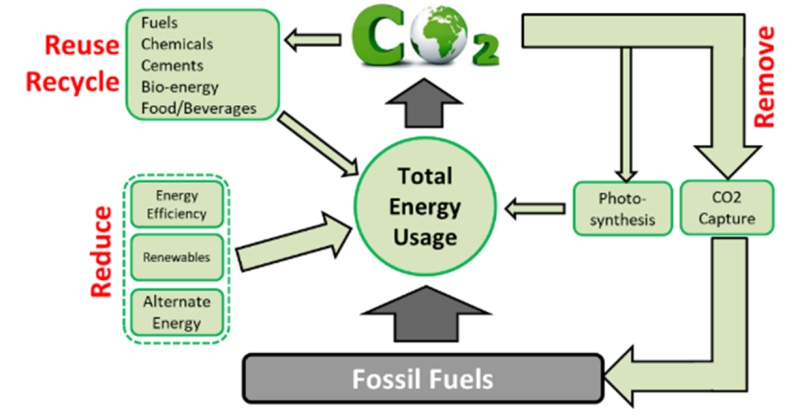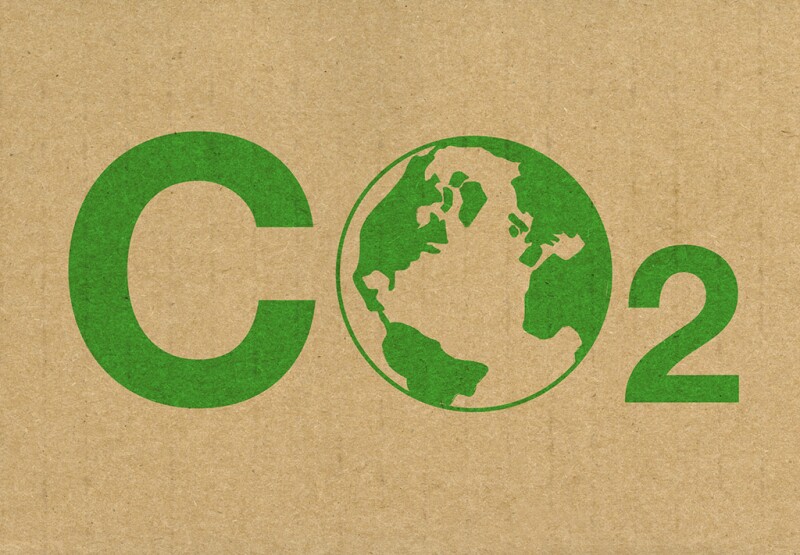The impact of climate change is forcing the world to deliberate the use of fossil fuels and implement technologies that either reduce carbon emissions or remove them before they enter the atmosphere. A monumental shift in energy usage is under way—in the great energy transition. Ambitious goals of net-zero carbon emissions targets are being set by companies, countries, and nations over the next several decades. The IEA recently published a controversial report and a roadmap to achieve net-zero carbon emissions by 2050 (World Energy Outlook 2021 – Analysis - IEA). It outlines a complete reboot and “nothing short of a total transformation of the energy systems that underpin our economies.” It calls for a complete ban on fossil fuel investments—something that has been debated fiercely—which even the IEA does not believe to be a workable solution. It has been dubbed “IEA’s La-La Land dream.”
A move towards net-zero will require huge investments and a collective effort that, so far, has not materialized. This is the main problem. Let us look at the CO2 emissions in terms of numbers. Figure 1 shows the total world CO2 emissions over time, by world regions. Currently the total CO2 emitted is around 37 billion tons per year.

The increase in CO2 emissions has been dramatic, especially in the last few decades. Most of the CO2 emitted is due to fossil fuels: coal, oil, and gas. About a third from OECD countries and nearly 60% from Asia. The emissions have stabilized in OCED countries but increasing in Asia and the rest of the world. Fossil fuels have dramatically improved the lives of billions of people over the past century. The world is now being asked to reduce its emissions and proposing to go to “net-zero” over the next few decades. For something that has gone up so much…how do we go down so fast? That is the question, and the problem of the century. By many measures, it is the most challenging problem facing humanity today.
The Solution: Circular Carbon Economy
A possible solution to this difficult and intractable problem has emerged by adopting a circular carbon economy (CCE), which is a framework for reducing CO2 emissions. It was recently endorsed by the G20 Energy Ministers in a meeting in Riyadh, Saudi Arabia. It is a closed loop system involving 4Rs: reduce, reuse, recycle, and remove (Fig. 2).

In the reduce part, fossil fuels can be substituted by renewables, and alternate forms of energy like hydro, nuclear, and bioenergy. Any substitution directly reduces CO2 emissions. Another low-hanging fruit is to improve efficiency of our processes. Under the reuse and recycle, CO2 can be converted into fuels, bio-energy, chemicals, and used for building materials such as cements. The fourth way to reduce CO2 emissions is to directly capture and remove it. These processes will include exploiting photosynthesis by planting trees and mangroves, harvesting algae, etc. The most important way to remove CO2 (at least in terms of quantities involved) is through carbon capture and storage (CCS). This includes the traditional CCS and also direct air capture. Once captured the CO2 is put back into the reservoirs where it came from in the first place.
Figure 3 shows the summary of the CCE and the 4 Rs. The list is indicative and not exhaustive. The ones in green are known processes and very doable. In fact they are being done. The ones in yellow are a little bit more difficult and more expensive to do. The ones in red are challenging and/or very expensive. We need to overcome technical and economic challenges to get them into operation.

Carbon Capture, Utilization and Storage (CCUS)
By far the most important way to reduce CO2 emissions is through CCUS, or its storage in underground reservoirs and aquifers. The CCUS technology has grown to commercial stage with more than 60 large-scale facilities being at various stages of development, with more than 20 in operation around the world capturing and storing approximately 40 million metric tons of CO2 per year. However, current state of CCUS deployment is well below where it needs to be despite significant technology advancement over the past. Innovative breakthrough capture and utilization technologies are key drivers to overcome the cost and performance barriers for CCUS deployment at scale for deeper emissions reduction consistent with our ambitious climate goals.
In addition, in the absence of ‘U’ in CCUS, government incentives or a carbon tax will be needed to overcome the large costs involved in the storage of CO2. Examples are the 45Q program adopted by the US Department of Energy and California’s low-carbon fuel standard.
CCE and Hydrogen Economy
Ultimately, over the longer term, hydrocarbons have to be replaced by a sustainable form of energy. One such option is hydrogen. It has many advantages including being a clean form of energy (produces only water when it burns), and it is carbon-free. However, there are a number of disadvantages which include costs, infrastructure and storage issues, and safety. The use of hydrogen will increase steadily in the coming decades and many companies and countries have started planning and allocating budgets for an inevitable hydrogen economy.
The hydrogen maybe “green” hydrogen—which comes from renewables through electrolysis of water, or “blue” hydrogen—by reforming natural gas with CO2 storage option. Grey or black hydrogen is produced from natural gas without the CO2 storage option. In any of these options, large quantities of hydrogen will be produced and one of the challenges that will need to be addressed is its storage. The aquifers and reservoirs will act as a temporary storage for hydrogen that can be produced during high demand times to produce electricity.
A Note for Young Professionals
So, what is a young professional to do to be a part of this solution to the biggest problem humanity is facing? In one word, be flexible. Many of the engineering principles and geoscience you have learned in school applies directly in implementing CCE through CCS and CCUS. The oil and gas industry is uniquely positioned to drive energy efficiency and reduce emissions by implementing a range of high-impact CCE initiatives. It will play an important role with the unique skill sets and know-how it has developed over the past 100 years. These include the industry knowledge of managing subterranean hydrocarbon reservoirs and operating complex processes and facilities. These can be utilized to address the unique challenges needed for the next phase of energy transition, including CCUS, subsurface monitoring and surveillance, and emerging technologies such as geothermal energy and a future hydrogen economy.
The Bottom Line
The world has to take a balanced approach to solving this problem and reducing our carbon footprint. CCE presents a methodology to achieve energy sustainability, especially from an oil and gas industry perspective. Our industry is very well positioned for the removal and storage of CO2 in subsurface reservoirs—a domain of petroleum engineers. A robust holistic approach is needed to achieve these goals, including a balanced energy portfolio that includes the continuing use of fossil fuels, alternate energy sources, CCUS, and hydrogen.
[The article was sourced from the author by TWA editor Muhammad Almajid.]


